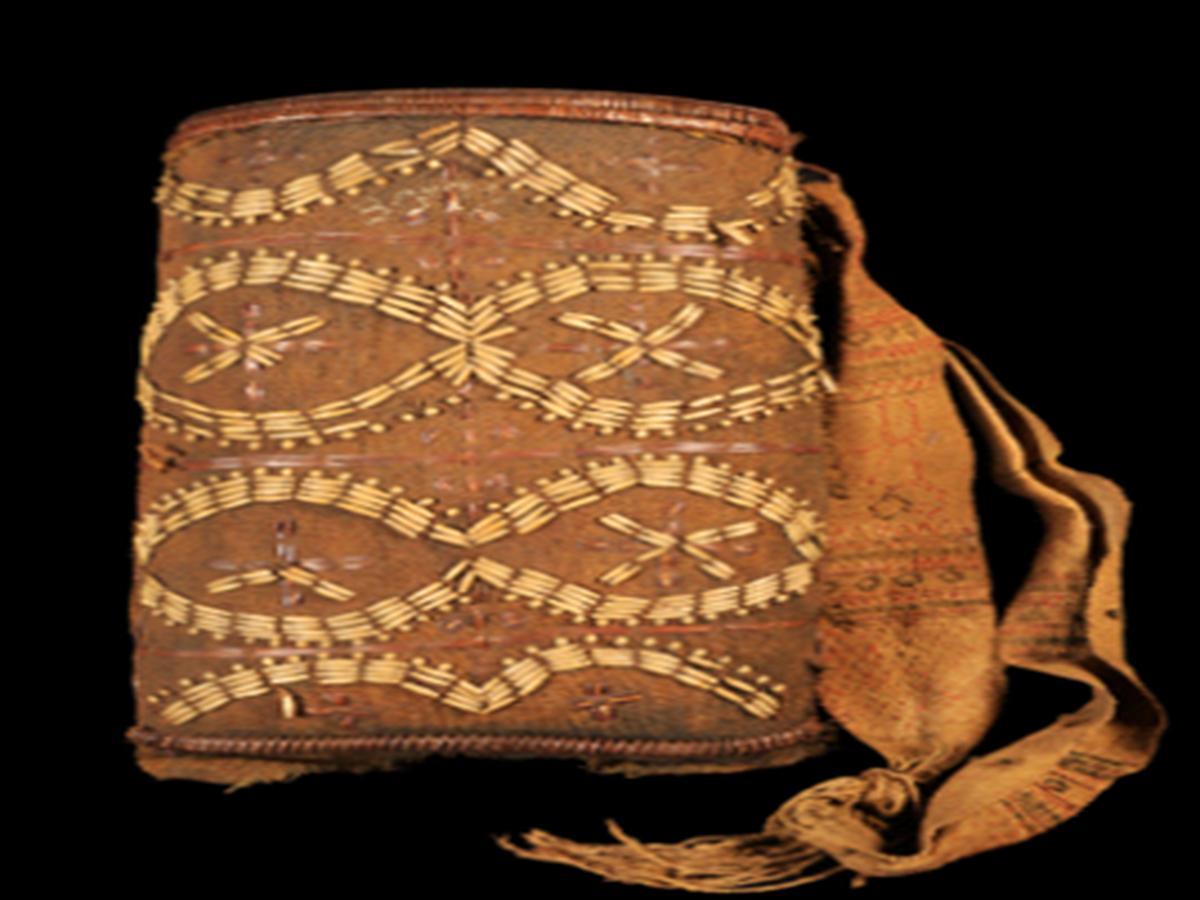State
Tribe Name
Art Type
short description
This traditional haversack is said to have originated with the Angami Naga tribe of Nagaland, and is an intricately crafted item for carrying daily and ceremonial goods. Made from both cane and canvas, the haversack is lightweight and difficult to wear-this makes it fitting for the mountain terrain and mobile life of Naga communities. Its structure is in brown, useful from both a practical and an aesthetic point of view.The Job's tears decoration (seeds used for adornment and sometimes for ritual use) on one face adds decoration and a tribal identity. The opposite side is extensively and beautifully woven in cane strips, thus demonstrating the skills of traditional hand-weaving at its finest with the help of natural and environmental-friendly materials. Cane is readily available in the region and is much cherished in Nagaland for crafting furniture, baskets, and all kinds of utility items owing to its strength and flexibility.
Thumbnail

Filter Postion
Left
Filter Background
Off
Theme
Filter Header Image

content
Image

description
This traditional haversack is said to have originated with the Angami Naga tribe of Nagaland, and is an intricately crafted item for carrying daily and ceremonial goods. Made from both cane and canvas, the haversack is lightweight and difficult to wear-this makes it fitting for the mountain terrain and mobile life of Naga communities. Its structure is in brown, useful from both a practical and an aesthetic point of view.The Job's tears decoration (seeds used for adornment and sometimes for ritual use) on one face adds decoration and a tribal identity. The opposite side is extensively and beautifully woven in cane strips, thus demonstrating the skills of traditional hand-weaving at its finest with the help of natural and environmental-friendly materials. Cane is readily available in the region and is much cherished in Nagaland for crafting furniture, baskets, and all kinds of utility items owing to its strength and flexibility.
On the side of the haversack is a cotton strap that functions as a shoulder sling for carrying the haversack. The strap is artistically decorated as well; it may commonly feature classic Angami patterns or colors associated with clan or family identity. Cane strips are adjourned along the rim of the haversack opening; these strips make the haversack firm to hold its shape and structure over time.Such an object bears testimony to the relation between functionality and art within the Naga material world. It is more than just a thing used to carry; it speaks of identity, craftsmanship, and sustainable living.
On the side of the haversack is a cotton strap that functions as a shoulder sling for carrying the haversack. The strap is artistically decorated as well; it may commonly feature classic Angami patterns or colors associated with clan or family identity. Cane strips are adjourned along the rim of the haversack opening; these strips make the haversack firm to hold its shape and structure over time.Such an object bears testimony to the relation between functionality and art within the Naga material world. It is more than just a thing used to carry; it speaks of identity, craftsmanship, and sustainable living.
Image Mode
landscape
promoted
On
Verified
Off
